Research and scholarly material on flame and combustion.
TO
Filters: Collection: "uu_afrc" Type: "Text"
1 - 25 of 12
| Creator | Title | Date | Description | ||
|---|---|---|---|---|---|
| 1 |
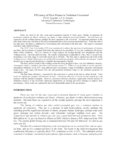 |
Gogolek, Peter E.G.; Hayden, A.C.S. | Efficiency of flare flames in turbulent crosswind | 2010 | Flares are used for the safe, clean and economical disposal of waste gases, whether in upstream oil production (solution gas flares), refineries, gas plants or other chemical processing facilities. Elevated flares are exposed to all the weather patterns, perhaps the most important is the crosswind. ... |
| 2 |
 |
Smith, Joseph D.; Suo-Ahttila, Ahti; Jackson, Robert;Smith, Scot K. | Prediction of Plume Formation and Dispersion from Gas Flares | 2012-09-05 | |
| 3 |
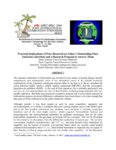 |
Seebold, James G.; Gogolek, Peter E.G.; Pohl, John; Schwartz, Robert | Practical implications of prior research on today's outstanding flare emissions questions and a research program to answer them | 2004 | The external combustion of hydrocarbon gas mixtures by any means, including flaring, literally manufactures and subsequently emits to the atmosphere traces of all possible molecular combinations of the elemental constituents present either in the fuel or in the air including the ozone precursor high... |
| 4 |
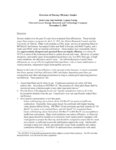 |
Cain, John; Seebold, James G.; Young, Lyman | Overview of flaring efficiency studies | 2002 | Several studies over the past 20 years have evaluated flare efficiencies. These include major flare research programs by the U.S. EPA, the Alberta Research Council, and the University of Alberta. Other work includes a CMA study; surveys of operating flares by BP/Statoil, the German Aerospace Centre ... |
| 5 |
 |
Joseph D. Smith | Safe Operation of Adjacent Multi-Point Ground Flares: Predicted and Measured Flame Radiation in Cross Flow Wind Conditions | 2016-09-14 | Conference paper |
| 6 |
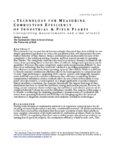 |
Smith, Philip J. | A technology for measuring combustion efficiency of industrial & field flares (integrating measurements and simulations) | 2011-08-12 | Flare research over the past decade has increasingly illustrated that there is likely no one simple operational parameter (or even a few parameters) that will characterize the combustion behavior of flare flames.i Simple correlations are unobtainable because of the complexity of the nonlinear mixing... |
| 7 |
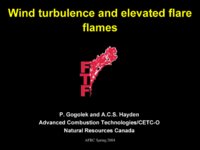 |
Gogolek, Peter E.G.; Hayden, A.C.S. | Wind turbulence and elevated flare flames | 2004 | |
| 8 |
 |
Gogolek, P.; Caverly, Andrea; Pohl, J.; Schwartz, R.; Seebold, J. | International Flare Consortium Flare Emissions Literature Survey, Dec 2009 | 2012-09-05 | Paper from 2012 AFRC Meeting. |
| 9 |
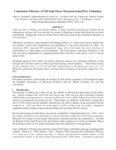 |
Chambers, Allan K.; Wootton, Tony; Moncrieff, Jan; McCready, Philip | Combustion efficiency of full scale flares measured using DIAL technology | 2004 | Flares are used in Alberta's oil and gas industry to safely treat H2S containing gas releases during emergencies, and gas well flow tests and as a means of disposing of gases that cannot be recovered economically. Despite the wide use of these flares, little data exists on the combustion efficiency ... |
| 10 |
 |
Seebold, J.G. | Practical implications of prior research on today's questions about flare emissions | 2004 | |
| 11 |
 |
Shore, David | Improving flare design a transition from art-form to engineering science | 2007 | Many of the day-to-day activities surrounding Flaring, at both the project design and operational stages, are vague and apparently outside the control of the Flare Engineer. Design specifications usually only cover a single case out of a multitude of possible compositions and flows. In service, flow... |
| 12 |
 |
Smith, Philip J. | Clean and secure energy from domestic oil shale and oil sands resources: Quarterly progress report: July 2011 to September 2011 | 2011 |
1 - 25 of 12
